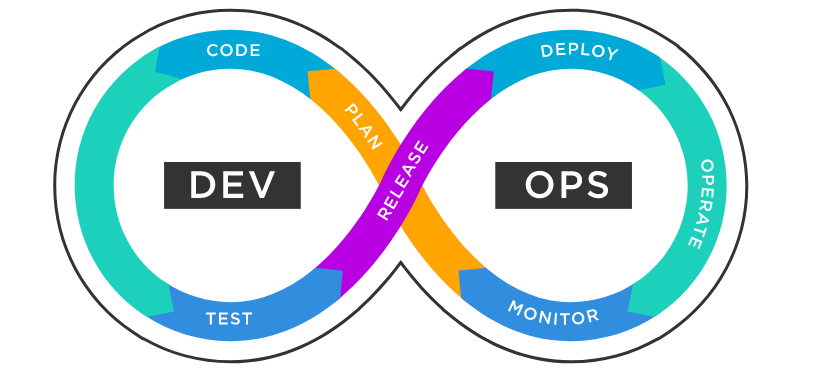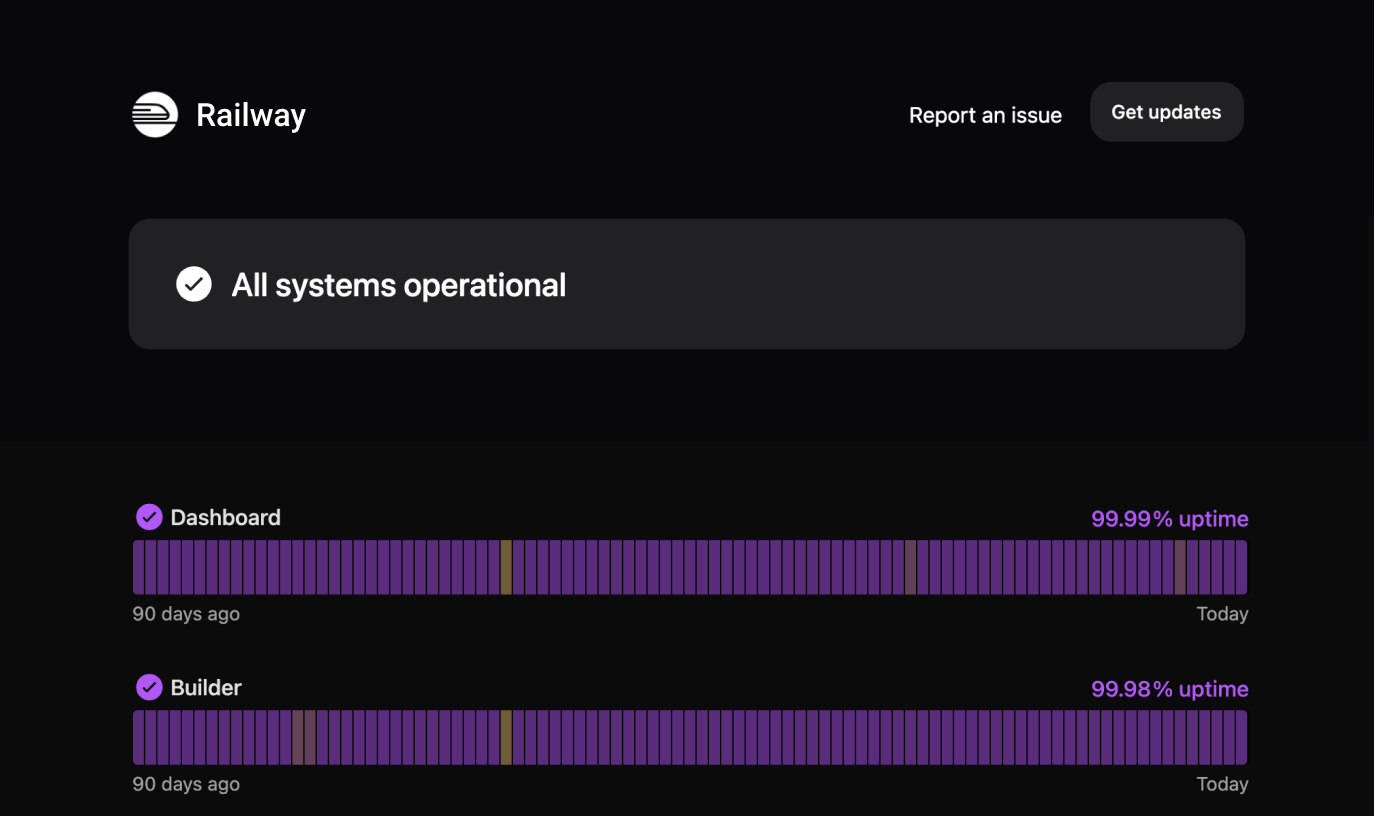Understanding DevOps in 2026: Meaning, Benefits, Goals, and Recommended Practices

Have you ever tried explaining software development to someone who’s not in the industry? It’s like trying to explain the plot of a Christopher Nolan movie (Tenet, anyone?)—it’s complex, interconnected, and often leaves you feeling like you missed something important.
As the use of technology is becoming increasingly prevalent in our digital world, DevOps software development is a topic that’s getting more and more attention. Case and point—the DevOps market is forecasted to reach $10 billion by 2026!
The reason for this is simple—adopting DevOps practices improves performance and ensures long-term success.
In this article, we’ll explore the world of DevOps in 2023, delving into its meaning, benefits, goals, and recommended practices. So join us at Instatus as we dive into the world of DevOps.
Let’s get started!
What is DevOps?
DevOps is a set of practices that combines software development (Dev) and IT operations (Ops) to streamline the software development process (now, that’s what we call wordplay!). From building and deployment to maintenance and updates, DevOps has your back!

Strictly speaking, DevOps best practices aim to increase collaboration between development and operations teams. It's an approach that borrows heavily from agile methodologies to enable faster software development—especially compared to Traditional Ops methods that are 41% more time-consuming!
What are DevOps goals?
DevOps goals aren’t shrouded in mystery—they aim to optimize the flow of business value from the inception of an idea to the delivery of the end–product to the user. This involves promoting collaboration between all DevOps teams involved in the process and optimizing the value chain.
How DevOps goals can benefit you?
Establishes a durable framework
The main goal of DevOps is to build infrastructures that support applications as they grow. In today’s business world, it’s essential to have scalable apps that can handle high demand. DevOps helps businesses automate many of the tasks and workflows associated with scaling, to reliably meet the demands of a growing user base.
Software is ready-to-go
When we make software, we want to ensure it remains in a releasable state, allowing for on-demand releases with new features added at any time. DevOps testing helps us to do this by automating processes, making them faster, more reliable, and more consistent.
Promotes end-to-end responsibilities
DevOps is about making sure everyone who works on the software, like the people who make it and the people who sell it, are responsible for making it work well. This means all aims are aligned and** feedback is taken after every step**.
Challenges of DevOps

Even though 99% of users believe DevOps welcomes a positive impact, some challenges do pop up. Let’s take a look at a few:
- Environmental challenges: When code ownership moves through various stages of the pipeline, such as testing, deployment, and production, each team brings its own set of environments. This can create challenges in ensuring the codebase works smoothly across all stages.
- Tool Integration: DevOps integration requires development, testing, and deployment stages to be in a continuous loop. Because of this, making sure all team members are on the same page can be difficult, as every department uses its own set of tools.
- Manual testing and deployment: Manual intervention in IT processes, such as testing and deployment, can slow processes down and make them unreliable. It’s more prone to human error, with continuous integration being virtually impossible.
- Nobody likes change: Most of us prefer to stay in our comfort zones. Unfortunately, this can lead to reduced productivity. When implementing DevOps, some team members may struggle to work with new team members, tools, and processes, but it’s a necessary component of every DevOps strategy.
What are the core DevOps principles?
Generally speaking, the principles of DevOps are developed based on its objectives**. Here are the main DevOps principles associated with the DevOps objectives:
Culture of collaboration
Perhaps the primary DevOps principle is building a collaborative environment for the development and operations teams (as well as DevOps security and testing teams) to work under. By breaking down silos, teams can work harmoniously to achieve common goals.
Continuous improvement
DevOps encourages continuous improvement through feedback and experimentation. Teams should regularly evaluate and improve their processes, with a focus on releasing updates that enhance software efficiency.
Automation
DevOps emphasizes using automation to reduce manual effort and enable speed in software delivery, updates, and patches. Teams strive to automate every aspect of the process, from code reviews to deployment, so there’s no risk of manual error.

Start at the end
There’s no room for assumptions in DevOps—teams should address actual requirements and real-world problems. So before embarking on a project, DevOps must consider the customer’s needs first and foremost.
Regular monitoring
As with any process, regular monitoring is integral to a successful strategy. Because of this, DevOps teams should continuously monitor applications to detect any issues that may arise. This enables them to act quickly without causing any inconvenience to customers.
How to set the right DevOps goals
DevOps has become increasingly important as organizations seek to improve their software delivery and stay competitive in the evolving digital landscape. However, to be successful with DevOps, organizations must set the right goals.
Let’s look at everything you need to know before setting sail on your DevOps journey:
Assess current needs and resources
Assessing current needs and resources helps uncover gaps or pain points in an organization's DevOps processes. This ensures teams identify underperforming areas rather than basing goals on assumptions.
Additionally, to keep DevOps goals realistic and achievable, companies should assess all available resources to support future DevOps strategies, such as technology, tools, and personnel.
With a clearer understanding of current needs and resources, it’s easy to **prioritize DevOps release management **based on its potential business impact. This ensures that they address their most critical goals first and that valuable resources don’t go to waste.
Regularly benchmark operational effectiveness
Benchmarking is the process of comparing an organization's performance against industry standards and competitors. It involves measuring performance data against a baseline using operational effectiveness, product quality, and customer satisfaction metrics.
By doing this regularly, organizations track progress over time while identifying areas for improvement. It’s important to identify the key performance indicators (KPIs) to measure performance, such as deployment frequency, lead time for changes, and mean time to detect (MTTD).

Benchmarking occurs over the entire DevOps process, so teams have a crystal clear image of how well they’re performing.
Relate DevOps goals to business strategy
When DevOps goals align with business strategy, it becomes easier to communicate the value of DevOps initiatives to stakeholders. By demonstrating how DevOps supports your business goals, stakeholders will be more willing to support your DevOps efforts.
DevOps initiatives that aren’t in sync with the game plan may introduce unnecessary risk for businesses. Stakeholders will want to see that DevOps support their risk management objectives, otherwise, it opens them up to internal and external weaknesses.
Examples of DevOps goals
1) Secure your internal networks
In software development, your internal network must be secure against network vulnerabilities. This includes implementing firewalls, intrusion detection, access controls, and other security measures that prevent unauthorized access to your systems.
**2) Ensure critical systems are backed up **
By backing data up every 24 hours, you help ensure you have accurate and up-to-date copies of critical systems (in case of a disaster or system failure). Organizations should establish clear backup policies and procedures, including backup schedules and retention periods. Regular testing of backups confirms that you can quickly restore.
3) Improve incident response time
This goal aims to reduce the time it takes to detect and resolve incidents in production. Inevitably, there will be issues that arise and bugs that need fixing. However, by establishing effective processes and workflows, your team can act quickly and efficiently to address these issues. This will provide customers with a better overall experience.
An example DevOps goal would be “reduce incident response time from two hours to 30 minutes by the end of the quarter.”
4) Establish specific, measurable goals
This goal aims to reduce the time it takes from code commit to code running in production. While decreasing turnaround times is critical, you can strengthen the process by establishing specific and measurable targets. For example, a measurable goal might be “increase the number of deployments per week from two to four by the end of the quarter.”
5) Reduce system downtime
Reducing system downtime directly impacts user experience, productivity, and revenue. It’s essential to implement strategies that improve the reliability of your systems. In this sense, an example of a DevOps goal would be “improve monthly system downtime to 99.95% by the end of the quarter.”
However, experiencing downtime due to any updates or bug fixes is unavoidable. Thankfully, Instatus has got you covered. With our** beautiful status pages** providing users with the full story and outage notification, you can keep them in the loop while you work on fixes and updates.
Keep your customers in the know with Instatus**
DevOps aims to secure effective collaboration between two critical aspects of software engineering—Development and Operations—to deliver value to customers in the shortest time possible.
By minimizing the gap between development and delivery, teams take ownership of the process and produce better results. However, as we said earlier, any DevOps processes are bound to face some downtime. When that happens,** a reliable** Instatus status page comes in handy.
Build your status page for free and keep your customers in the know!
Get ready for downtime
Monitor your services
Fix incidents with your team
Share your status with customers


